Without a doubt, our favorite (read: best) holiday book of the year. The 1942 Sears Christmas Book (Dover Publications, $19.99) is a faithful facsimile of the retailer’s 1942 Christmas edition . . . weeks after first “reading” it, I am looking forward to reliving those bygone years again and again.
 The 1942 Sears Christmas Book also provides an interesting look at how merchandise has evolved over the years. In 1942, Sears shoppers could purchase toys as well as housewares, clothes, furniture, candy, and gifts to send to servicemen (all at prices that now seem astonishingly low). The wartime catalog even includes information about the importance of saving scrap metal for munitions and encourages readers to buy war bonds.
The 1942 Sears Christmas Book also provides an interesting look at how merchandise has evolved over the years. In 1942, Sears shoppers could purchase toys as well as housewares, clothes, furniture, candy, and gifts to send to servicemen (all at prices that now seem astonishingly low). The wartime catalog even includes information about the importance of saving scrap metal for munitions and encourages readers to buy war bonds.
Nostalgia has never been nicer!
Picking this book as one of the year’s best is easier than picking a guitar. Guitar: The World’s Most Seductive Instrument (Workman Publishing),s an obsessive, full-color book presented in an irresistible slipcase, features 200 instruments in stunning detail.
 Get thisclose to Prince’s Yellow Cloud; Willie Nelson’s “Trigger”; Muddy Water’s Thunderbird; and “Rocky,” lovingly hand-painted by its owner, George Harrison. Met historic instruments—Fender’s Broadcaster; Les Paul’s “Log”; the Gibson Nick Lucas Special, the very first artist model—and stunning acoustics from a new wave of women builders, like Rosie Heydenrych of England, who’s known to use 5,000-year-old wood retrieved from a peat bog, and quirky one-of-a-kind guitars, like Linda Manzer’s Pikasso II, a musical marvel consisting of four necks, 42 strings and a thousand pounds of pressure.
Get thisclose to Prince’s Yellow Cloud; Willie Nelson’s “Trigger”; Muddy Water’s Thunderbird; and “Rocky,” lovingly hand-painted by its owner, George Harrison. Met historic instruments—Fender’s Broadcaster; Les Paul’s “Log”; the Gibson Nick Lucas Special, the very first artist model—and stunning acoustics from a new wave of women builders, like Rosie Heydenrych of England, who’s known to use 5,000-year-old wood retrieved from a peat bog, and quirky one-of-a-kind guitars, like Linda Manzer’s Pikasso II, a musical marvel consisting of four necks, 42 strings and a thousand pounds of pressure.
War sucks. Yet Vicksburg: Grant’s Campaign That Broke the Confederacy (Simon & Schuster, $35) tells the full story of the last stronghold of the Confederacy on the Mississippi River. It prevented the Union from using the river for shipping between the Union-controlled Midwest and New Orleans and the Gulf of Mexico. The Union navy tried to take Vicksburg, which sat on a high bluff overlooking the river, but couldn’t do it. General Grant moved his army south and joined forces with Admiral Porter, but even together they could not come up with a successful plan.
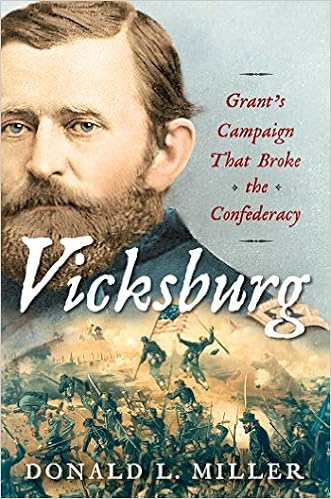 At one point Grant even tried to build a canal so that the river could be diverted away from Vicksburg.is year-long campaign to win the city.
At one point Grant even tried to build a canal so that the river could be diverted away from Vicksburg.is year-long campaign to win the city.
Donald L. Miller brings to life all the drama, characters, and significance of Vicksburg, a historic moment that rivals any war story in history.
Cute book, clever design. The Queeriodic Table: A Celebration of LGBTQ+ Culture (Summersdale , $13.99) plays on the periodic table to celebrate all aspects of the culture in small, easy-to-digest sections.
 Celebrate the richness of modern queer culture and its vast history with this fascinating introduction to all the essential elements that helped sculpt the queer community up to the present day.
Celebrate the richness of modern queer culture and its vast history with this fascinating introduction to all the essential elements that helped sculpt the queer community up to the present day.
Stephen King calls the book “one hell of a suspense novel.” We couldn’t agreed more. ?—Stephen King
Linwood Barclay’s Elevator Pitch (William Morrow, $26.99) begins on a Monday, when four people board an elevator in a Manhattan office tower. Each presses a button for their floor, but the elevator proceeds, non-stop, to the top. Once there, it stops for a few seconds, and then plummets.
Right to the bottom of the shaft.
 It appears to be a horrific, random tragedy. But then, on Tuesday, it happens again, in a different Manhattan skyscraper. And when Wednesday brings yet another high-rise catastrophe, one of the most vertical cities in the world—and the nation’s capital of media, finance and entertainment—is plunged into chaos.
It appears to be a horrific, random tragedy. But then, on Tuesday, it happens again, in a different Manhattan skyscraper. And when Wednesday brings yet another high-rise catastrophe, one of the most vertical cities in the world—and the nation’s capital of media, finance and entertainment—is plunged into chaos.
You expect us to give more away?
Take the elevator to the bottom floor and go get your copy!
People from all over the United States visit Nantucket Island to celebrate Christmas in a charming Early American setting. From the Christmas Stroll along cobblestoned Main Street to the Festival of Trees held each year at the historic Whaling Museum, Nantucket celebrates the holiday season with traditions and decorations that transform the island into a winter wonderland.
 Can’t make it this year? Opt for Lesley Linsley’s Christmas on Nantucket (Globe Pequot, $29.99) as she takes readers on a holiday tour through this picturesque island, offering her own ideas for recreating a quaint Nantucket-style Christmas along the way.
Can’t make it this year? Opt for Lesley Linsley’s Christmas on Nantucket (Globe Pequot, $29.99) as she takes readers on a holiday tour through this picturesque island, offering her own ideas for recreating a quaint Nantucket-style Christmas along the way.
The Wild Bunch has been named one of the greatest Westerns of all time by the American Film Institute. With good reason. Sam Peckinpah’s film is the story of a gang of outlaws who are one big steal from retirement. When their attempted train robbery goes awry, the gang flees to Mexico and falls in with a brutal general of the Mexican Revolution, who offers them the job of a lifetime. Conceived by a stuntman, directed by a blacklisted director, and shot in the sand and heat of the Mexican desert, the movie seemed doomed. Instead, it became an instant classic with a dark, violent take on the Western movie tradition.
 In The Wild Bunch: Sam Peckinpah, a Revolution in Hollywood, and the Making of a Legendary Film Bloomsbury Publishing, $28), W.K. Stratton tells the fascinating history of the making of the movie and documents for the first time the extraordinary contribution of Mexican and Mexican-American actors and crew members to the movie’s success. The Wild Bunch is an authoritative history of the making of a movie and the era behind it.
In The Wild Bunch: Sam Peckinpah, a Revolution in Hollywood, and the Making of a Legendary Film Bloomsbury Publishing, $28), W.K. Stratton tells the fascinating history of the making of the movie and documents for the first time the extraordinary contribution of Mexican and Mexican-American actors and crew members to the movie’s success. The Wild Bunch is an authoritative history of the making of a movie and the era behind it.
Written in Gary John Bishop’s irreverent, in-your-face style that resonated with the hundreds of thousand of fans who read his Unfu*k Yourself, Stop Doing That Sh*t: End Self-Sabotage and Demand Your Life Back (HarperOne, $22.99) reveals our deepest subconscious machinery, with a real-world approach to powerfully translate our most negative thoughts and behaviors into a vitalizing, sabotage-free future.
 Think you’ve unfucked yourself? Yet why do you act the way you do? Do you ever feel like you get stuck in destructive cycles that hold you back from living the life you really want? In a dynamic, compelling and aha-filled journey, the book helps you connect the dots of your “stuff” all the way from your past to the present. You’ll make sense of yourself as you uncover how to interrupt those destructive cycles of yours and make the kind of profound shift needed to get your life on track.
Think you’ve unfucked yourself? Yet why do you act the way you do? Do you ever feel like you get stuck in destructive cycles that hold you back from living the life you really want? In a dynamic, compelling and aha-filled journey, the book helps you connect the dots of your “stuff” all the way from your past to the present. You’ll make sense of yourself as you uncover how to interrupt those destructive cycles of yours and make the kind of profound shift needed to get your life on track.
Greek to Me: Adventures of the Comma Queen ( W. W. Norton & Company, $25.95) is a charming account of Mary Norris’s lifelong love affair with words (pencils and punctuation kept her busy in The New Yorker’s celebrated copy department) and her solo adventures in the land of olive trees and ouzo.
 Along the way, Norris explains how the alphabet originated in Greece, makes the case for Athena as a feminist icon, goes searching for the fabled Baths of Aphrodite, and reveals the surprising ways Greek helped form English. Filled with Norris’s memorable encounters with Greek words, Greek gods, Greek wine―and more than a few Greek men―Greek to Me is the Comma Queen’s fresh take on Greece and the exotic yet strangely familiar language that so deeply influences our own.
Along the way, Norris explains how the alphabet originated in Greece, makes the case for Athena as a feminist icon, goes searching for the fabled Baths of Aphrodite, and reveals the surprising ways Greek helped form English. Filled with Norris’s memorable encounters with Greek words, Greek gods, Greek wine―and more than a few Greek men―Greek to Me is the Comma Queen’s fresh take on Greece and the exotic yet strangely familiar language that so deeply influences our own.
Since the moment we first entered Downton Abbey in 1912, we have been swept away by Julian Fellowes’ evocative world of romance, intrigue, drama and tradition. Now, in 1925, as Downton Abbey prepares to close its doors for the final time, Jessica Fellowes leads us through the house and estate, reliving the iconic moments of the wonderfully aristocratic Crawley family and their servants as they navigate the emerging modern age.
 St. Martin’s Press has released two scumptions books that fans will relish. Downton Abbey A Celebration: The Official Companion to All Six Seasons ($22.99) is crammed with in-depth cast interview, as well as a complete episode guide for the first five seasons and a teaser for the sixth.
St. Martin’s Press has released two scumptions books that fans will relish. Downton Abbey A Celebration: The Official Companion to All Six Seasons ($22.99) is crammed with in-depth cast interview, as well as a complete episode guide for the first five seasons and a teaser for the sixth.
Downton Abbey: The Official Film Companion (St. Martin’s Press, $29.99) brings the world and the characters of our favorite fictional country house to life.
 Featuring spectacular photographs from the production, interviews with the cast and crew, and a look into the historical and geographical backdrop of the film, this official guide to the film is made to be treasured and loved by fans across the globe.
Featuring spectacular photographs from the production, interviews with the cast and crew, and a look into the historical and geographical backdrop of the film, this official guide to the film is made to be treasured and loved by fans across the globe.
The film revolves around the King and Queen making an official visit to Downton in 1927, and not only sees the return of all the main cast from the final television series, but also introduces some great British actors to the world of Downton, as we meet the royal family and their retinue. The accompanying book is lavishly illustrated with stunning shots from both behind and in front of the camera, which capture some wonderful off-guard moments during filming, as well as the original costume illustrations.
Did you know that one of the world’s sharpest and most forensic minds inhabited the persona of an attractive old lady, with pink cheeks and blue eyes and a gentle, rather fussy manner? Discover the secrets of Miss Marple in Murder, She Said: The Quotable Miss Marple (William Morrow, $16.99).
 It’s a tiny tome of her quotes and sayings, and an essay by Agatha Christie (the Queen of Crime who created MM) appearing for the first time in any book.
It’s a tiny tome of her quotes and sayings, and an essay by Agatha Christie (the Queen of Crime who created MM) appearing for the first time in any book.
Experience the work of Leonardo da Vinci, one of the greatest painters, inventors, and scientists of all time, in a brand-new way. Courtney Watson McCarthy has crafted many brilliant pop-up books, and Leonardo Pop-Ups (Thames & Hudson, $34.95) is the most dynamic.
 Featuring many of Da Vinci’s most enduring artworks, both as illustrations and pop-ups, including The Vitruvian Man, The Last Supper, and, of course, the Mona Lisa, Leonardo Pop-Ups also includes Da Vinci’s self-portrait, an overview of his architectural designs, and inventions such as a flapping ornithopter.
Featuring many of Da Vinci’s most enduring artworks, both as illustrations and pop-ups, including The Vitruvian Man, The Last Supper, and, of course, the Mona Lisa, Leonardo Pop-Ups also includes Da Vinci’s self-portrait, an overview of his architectural designs, and inventions such as a flapping ornithopter.
Spanning every episode of Game of Thrones across all eight seasons, Kim Renfro goes deep into how the show was made, why it became such a phenomenon and explores every detail you want to know.
 The Unofficial Guide to Game of Thrones is the perfect book to look back at all you may have missed or to jump-start you on a second viewing of the whole series. Valar morghulis!
The Unofficial Guide to Game of Thrones is the perfect book to look back at all you may have missed or to jump-start you on a second viewing of the whole series. Valar morghulis!
We would not have honey without honeybees. Without the pinhead-sized chocolate midge, cocoa flowers would not pollinate. No cocoa, no chocolate. The ink that was used to write the Declaration of Independence was derived from galls on oak trees, which are induced by a small wasp. The fruit fly was essential to medical and biological research experiments that resulted in six Nobel prizes. Blowfly larva can clean difficult wounds; flour beetle larva can digest plastic; several species of insects have been essential to the development of antibiotics. Insects turn dead plants and animals into soil. They pollinate flowers, including crops that we depend on. They provide food for other animals, such as birds and bats. They control organisms that are harmful to humans. Life as we know it depends on these small creatures.
 With ecologist Anne Sverdrup-Thygeson as our capable, entertaining guide into the insect world, we’ll learn that there is more variety among insects than we can even imagine and the more you learn about insects, the more fascinating they become. Buzz, Sting, Bite: Why We Need Insects (Simon & Schuster, $26) is an essential introduction to the little creatures that make the world go round.
With ecologist Anne Sverdrup-Thygeson as our capable, entertaining guide into the insect world, we’ll learn that there is more variety among insects than we can even imagine and the more you learn about insects, the more fascinating they become. Buzz, Sting, Bite: Why We Need Insects (Simon & Schuster, $26) is an essential introduction to the little creatures that make the world go round.
Nelson DeMille and Alex DeMille’s blistering thriller The Deserter (Simon & Schuster, $28.99) is and features a brilliant and unorthodox Army investigator, his enigmatic female partner, and their hunt for the Army’s most notorious—and dangerous—deserter.
When Captain Kyle Mercer of the Army’s elite Delta Force disappeared from his post in Afghanistan, a video released by his Taliban captors made international headlines.
 But circumstances were murky: Did Mercer desert before he was captured? Then a second video sent to Mercer’s Army commanders leaves no doubt: The trained assassin and keeper of classified Army intelligence has willfully disappeared.
But circumstances were murky: Did Mercer desert before he was captured? Then a second video sent to Mercer’s Army commanders leaves no doubt: The trained assassin and keeper of classified Army intelligence has willfully disappeared.
And we ain’t telling you anything else: Why spoil the read?
1973 was the year rock hit its peak while splintering―just like the rest of the world. Ziggy Stardust travelled to America in David Bowie’s Aladdin Sane. The Dark Side of the Moon began its epic run on the Billboard charts, inspired by the madness of Pink Floyd’s founder, while all four former Beatles scored top ten albums, two hitting #1. FM battled AM, and Motown battled Philly on the charts, as the era of protest soul gave way to disco, while DJ Kool Herc gave birth to hip hop in the Bronx. The glam rock of the New York Dolls and Alice Cooper split into glam metal and punk. Elvis Presley’s Aloha from Hawaii via Satellite was NBC’s top-rated special of the year, while Elton John’s albums dominated the number one spot for two and a half months.
 Just as U.S. involvement in Vietnam drew to a close, Roe v. Wade ignited a new phase in the culture war. While the oil crisis imploded the American dream of endless prosperity, and Watergate’s walls closed in on Nixon, the music of 1973 both reflected a shattered world and brought us together.
Just as U.S. involvement in Vietnam drew to a close, Roe v. Wade ignited a new phase in the culture war. While the oil crisis imploded the American dream of endless prosperity, and Watergate’s walls closed in on Nixon, the music of 1973 both reflected a shattered world and brought us together.
Celebrate the year with 1973: Rock at the Crossroads (Thomas Dunne Books, $29.99). You will be glad you did.





 In
In 
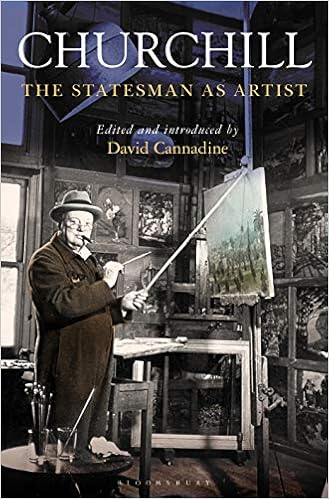
 “the greatest Briton of all time” and the best friend the United States ever had. Many of the items are published here for the first time.
“the greatest Briton of all time” and the best friend the United States ever had. Many of the items are published here for the first time.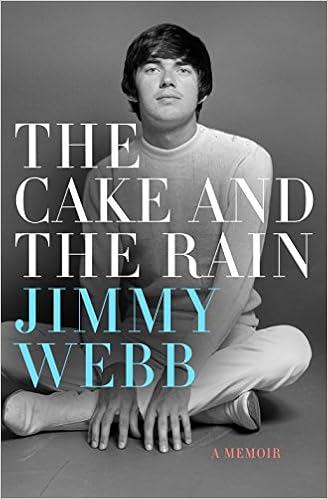 Here, Webb delivers a snapshot of his life from 1955 to 1970, from the proverbial humble beginnings into a moneyed and manic international world of beautiful women, drugs, cars and planes. One question remains: What was that cake doing in the rain?
Here, Webb delivers a snapshot of his life from 1955 to 1970, from the proverbial humble beginnings into a moneyed and manic international world of beautiful women, drugs, cars and planes. One question remains: What was that cake doing in the rain? very young boy mentored by his uncle Harry progressed through the recording world in its infancy and, under the tutelage of legendary engineer and producer Tom Dowd in his heyday, became one of the all-time great recording engineers.
very young boy mentored by his uncle Harry progressed through the recording world in its infancy and, under the tutelage of legendary engineer and producer Tom Dowd in his heyday, became one of the all-time great recording engineers. More than 200 songs, videos and revolutionary dance moves are analyzed, uncovering the fascinating stories around their creation and allowing fans the chance to truly understand the artistry behind them.
More than 200 songs, videos and revolutionary dance moves are analyzed, uncovering the fascinating stories around their creation and allowing fans the chance to truly understand the artistry behind them. taken over a ten-year period in locations all over the world, accompanied by recollections from the author on his time with Morrissey and the artistic process of collaborating with him. Intimate, creative and surprising, this is a document of an artist at the height of his powers.
taken over a ten-year period in locations all over the world, accompanied by recollections from the author on his time with Morrissey and the artistic process of collaborating with him. Intimate, creative and surprising, this is a document of an artist at the height of his powers. Lerner invites readers to step into the room with them and listen in on a lifetime’s ongoing dialogue, considerations of matters of vital interest, spiritual, mundane, and profane. In telling their story, Lerner depicts Leonard Cohen as a captivating persona, the likes of which we may never see again.
Lerner invites readers to step into the room with them and listen in on a lifetime’s ongoing dialogue, considerations of matters of vital interest, spiritual, mundane, and profane. In telling their story, Lerner depicts Leonard Cohen as a captivating persona, the likes of which we may never see again.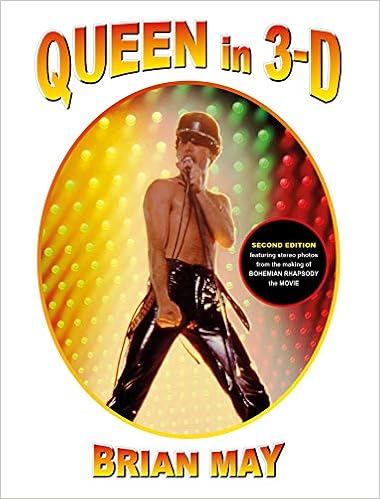 The book is illustrated with more than 300 photographs; these shots of Freddie Mercury, John Deacon, Roger Taylor and Brian himself, on and off stage all round the world, spring into life when viewed with Brian’s patent OWL viewer (supplied free with the book). Through the eyes of Brian s camera you are transported back in time to experience Queen’s miraculous 46-year journey as if you were actually there . . . whether in a dressing room, in a car, on a plane, or on stage at Madison Square Garden.
The book is illustrated with more than 300 photographs; these shots of Freddie Mercury, John Deacon, Roger Taylor and Brian himself, on and off stage all round the world, spring into life when viewed with Brian’s patent OWL viewer (supplied free with the book). Through the eyes of Brian s camera you are transported back in time to experience Queen’s miraculous 46-year journey as if you were actually there . . . whether in a dressing room, in a car, on a plane, or on stage at Madison Square Garden. Panelists include Queen experts, rock journalists, musicians and record industry figures. The results are freewheeling discussions delving into the individual songs, the circumstances that surrounded the recording of each album, the band and contemporary rock contexts into which they were released, and more.
Panelists include Queen experts, rock journalists, musicians and record industry figures. The results are freewheeling discussions delving into the individual songs, the circumstances that surrounded the recording of each album, the band and contemporary rock contexts into which they were released, and more. In her memoir, a work of deep reflection and mesmerizing storytelling, Michelle Obama invites readers into her world, chronicling the experiences that have shaped her—from her childhood on the South Side of Chicago to her years as an executive balancing the demands of motherhood and work, to her time spent at the world’s most famous address. With unerring honesty and lively wit, she describes her triumphs and her disappointments, both public and private, telling her full story as she has lived it—in her own words and on her own terms.
In her memoir, a work of deep reflection and mesmerizing storytelling, Michelle Obama invites readers into her world, chronicling the experiences that have shaped her—from her childhood on the South Side of Chicago to her years as an executive balancing the demands of motherhood and work, to her time spent at the world’s most famous address. With unerring honesty and lively wit, she describes her triumphs and her disappointments, both public and private, telling her full story as she has lived it—in her own words and on her own terms. Consisting of two shoots spread across London and New York in the lead-up to the release of her debut album Frank, these photos capture a sense of fun, mischief and style, giving an early glimpse of a star in the making.
Consisting of two shoots spread across London and New York in the lead-up to the release of her debut album Frank, these photos capture a sense of fun, mischief and style, giving an early glimpse of a star in the making. Now it’s time to welcome Shumsky’s Maharishi & Me:
Now it’s time to welcome Shumsky’s Maharishi & Me: 
 Amidst all the music and mayhem, the drugs, the premature deaths, the ruined hotel rooms, Roger is our perfect narrator, remaining sober (relatively) and observant and determined to make The Who bigger and bigger. Not only his personal story, this is the definitive biography of The Who.
Amidst all the music and mayhem, the drugs, the premature deaths, the ruined hotel rooms, Roger is our perfect narrator, remaining sober (relatively) and observant and determined to make The Who bigger and bigger. Not only his personal story, this is the definitive biography of The Who.
 The thin yet hefty tome is packed with more than 80 photographs that illustrate the concept of building the life you want from the outside in and the inside out. And Jane Fonda’s introduction is anything but a drag.
The thin yet hefty tome is packed with more than 80 photographs that illustrate the concept of building the life you want from the outside in and the inside out. And Jane Fonda’s introduction is anything but a drag. Novotná provides eyewitness accounts of the Nazi takeovers of Germany and Austria, the Soviet occupation of Czechoslovakia, and the aftermath of the Velvet Revolution in 1989, as well as her extensive travels in the United States during and after World War II.
Novotná provides eyewitness accounts of the Nazi takeovers of Germany and Austria, the Soviet occupation of Czechoslovakia, and the aftermath of the Velvet Revolution in 1989, as well as her extensive travels in the United States during and after World War II.


 Vintage ornaments, lights, decorations, cards and wrapping all conjure up happy memories of Christmases past and serve as tangible mementos of holidays shared with family and friends. In fact, finding these objects, decorating with them and sharing them with others brings an instant feeling of comfort and joy. Coupled with beautiful photographs, tips on collecting, and secret shopping haunts, A Very Vintage Christmas offers a look at holiday decor in America and gives suggestions on how to make vintage finds work for today’s audience. While each chapter of A Very Vintage Christmas is unique, there is a common thread that runs through them all: the love of beautiful holiday decorations, and the interest in their history, value, and preservation. Quite merry.
Vintage ornaments, lights, decorations, cards and wrapping all conjure up happy memories of Christmases past and serve as tangible mementos of holidays shared with family and friends. In fact, finding these objects, decorating with them and sharing them with others brings an instant feeling of comfort and joy. Coupled with beautiful photographs, tips on collecting, and secret shopping haunts, A Very Vintage Christmas offers a look at holiday decor in America and gives suggestions on how to make vintage finds work for today’s audience. While each chapter of A Very Vintage Christmas is unique, there is a common thread that runs through them all: the love of beautiful holiday decorations, and the interest in their history, value, and preservation. Quite merry. Six weeks after the storm, the city laid off half its workforce—precisely when so many people were turning to its government for help. How could the city possibly come back? A decade later, Rivlin traces the storm’s immediate damage, the city of New Orleans’s efforts to rebuild itself, and the storm’s lasting effects not just on the area’s geography and infrastructure—but on the psychic, racial, and social fabric of one of this nation’s great cities.
Six weeks after the storm, the city laid off half its workforce—precisely when so many people were turning to its government for help. How could the city possibly come back? A decade later, Rivlin traces the storm’s immediate damage, the city of New Orleans’s efforts to rebuild itself, and the storm’s lasting effects not just on the area’s geography and infrastructure—but on the psychic, racial, and social fabric of one of this nation’s great cities.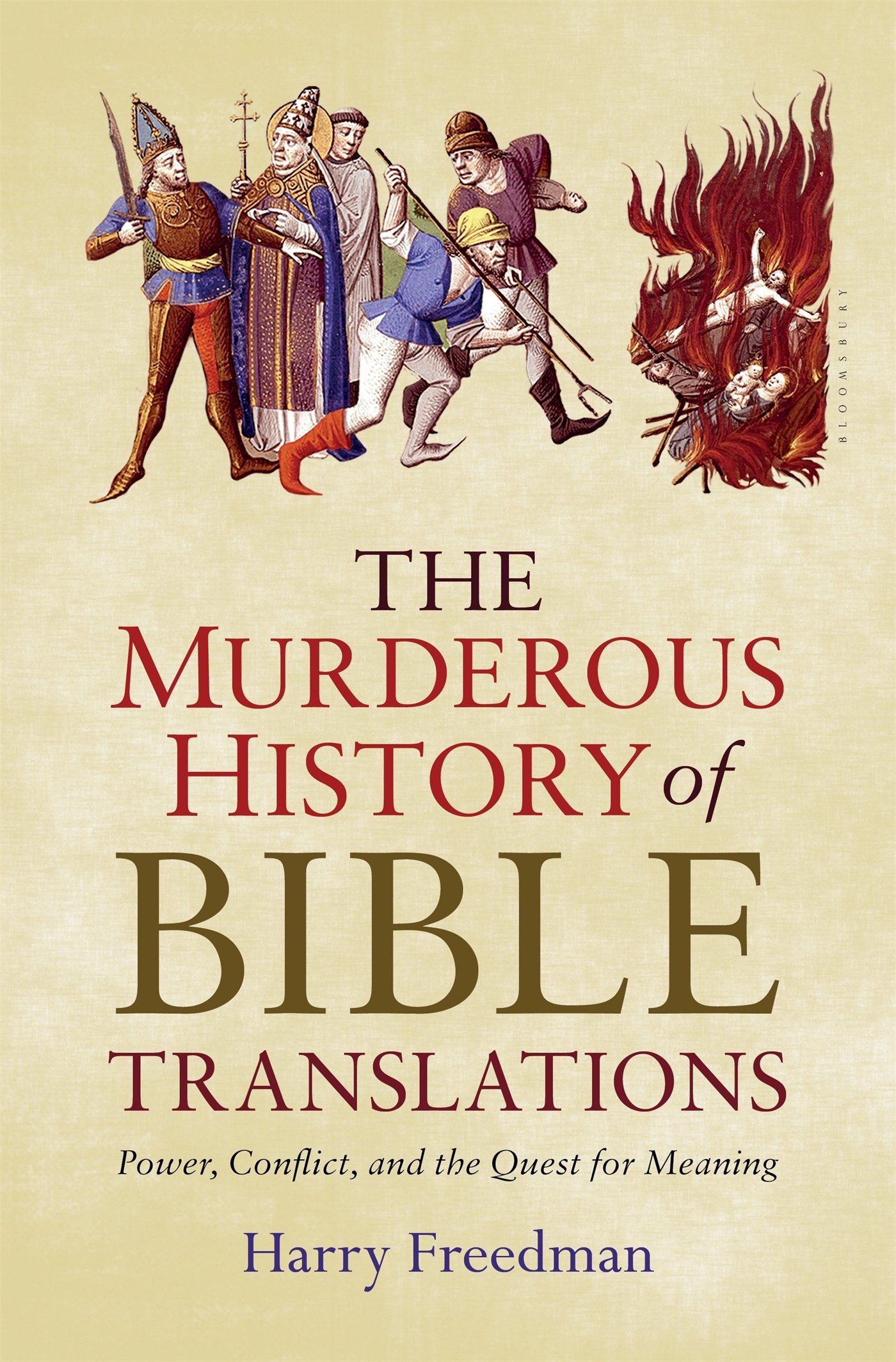 The Murderous History of Bible Translations: Power, Conflict, and the Quest for Meaning (Bloomsbury, $28) tells the remarkable, and bloody, story of those who dared translate the word of God.
The Murderous History of Bible Translations: Power, Conflict, and the Quest for Meaning (Bloomsbury, $28) tells the remarkable, and bloody, story of those who dared translate the word of God.  Therese O’Neill opens the doors to everything we secretly wanted to know about the Victorian era, but didn’t think to ask. Knickers with no crotches? Check. Arsenic as a facial scrub? Check. The infrequency of bathing and the stench of the Victorian human body? It’s silly, sinful and superb! And the photos!
Therese O’Neill opens the doors to everything we secretly wanted to know about the Victorian era, but didn’t think to ask. Knickers with no crotches? Check. Arsenic as a facial scrub? Check. The infrequency of bathing and the stench of the Victorian human body? It’s silly, sinful and superb! And the photos! With beautiful illustrations and engaging explanations of the power that herbs, flowers, and natural oils have over our physical bodies, this is the perfect gift for lovers everywhere.
With beautiful illustrations and engaging explanations of the power that herbs, flowers, and natural oils have over our physical bodies, this is the perfect gift for lovers everywhere. The Xerces Society for Invertebrate Conservation offers browsable profiles of 100 common flowers, herbs, shrubs and trees that attract bees, butterflies, moths and hummingbirds. The recommendations are simple: Sow seeds for some plants—such as basil, rhododendron and blueberries—and simply don’t mow down abundant native species, including aster, goldenrod, and milkweed. This guide will empower homeowners, landscapers, apartment dwellers—anyone with a scrap of yard or a window box—to protect our pollinators.
The Xerces Society for Invertebrate Conservation offers browsable profiles of 100 common flowers, herbs, shrubs and trees that attract bees, butterflies, moths and hummingbirds. The recommendations are simple: Sow seeds for some plants—such as basil, rhododendron and blueberries—and simply don’t mow down abundant native species, including aster, goldenrod, and milkweed. This guide will empower homeowners, landscapers, apartment dwellers—anyone with a scrap of yard or a window box—to protect our pollinators. The editors take readers room by room, tapping the best ideas from domino magazine and culling insights from their own experiences. With an eye to making design accessible and exciting, this book demystifies the decorating process and provides the tools for making spaces that are personal, functional and fabulous. Expert decorating tips, lush photography, and shrewd shopping strategies converge in straightforward guides. Maybe that sofa should be a bit closer to the window?
The editors take readers room by room, tapping the best ideas from domino magazine and culling insights from their own experiences. With an eye to making design accessible and exciting, this book demystifies the decorating process and provides the tools for making spaces that are personal, functional and fabulous. Expert decorating tips, lush photography, and shrewd shopping strategies converge in straightforward guides. Maybe that sofa should be a bit closer to the window? The Ten Commandments don’t prohibit killing or coveting. What does the Bible say about violence? About the Rapture? About keeping kosher? About marriage and divorce? In The Bible Doesn’t Say That (Thomas Dunne Books, $25.99), acclaimed translator and biblical scholar Dr. Joel M. Hoffman walks the reader through dozens of mistranslations, misconceptions and other misunderstandings about the Bible. In 40 short, straightforward chapters, he covers morality, life-style, theology, and biblical imagery explores what the Bible meant before it was misinterpreted over the past 2,000 years.
The Ten Commandments don’t prohibit killing or coveting. What does the Bible say about violence? About the Rapture? About keeping kosher? About marriage and divorce? In The Bible Doesn’t Say That (Thomas Dunne Books, $25.99), acclaimed translator and biblical scholar Dr. Joel M. Hoffman walks the reader through dozens of mistranslations, misconceptions and other misunderstandings about the Bible. In 40 short, straightforward chapters, he covers morality, life-style, theology, and biblical imagery explores what the Bible meant before it was misinterpreted over the past 2,000 years. In The History and Uncertain Future of Handwriting (Bloombury, $26), Trubek uncovers the long and significant impact handwriting has had on culture and humanity-from the first recorded handwriting on the clay tablets of the Sumerians some four thousand years ago and the invention of the alphabet as we know it, to the rising value of handwritten manuscripts today. Establishing a novel link between our deep past and emerging future, Trubek offers a colorful lens through which to view our shared social experience.
In The History and Uncertain Future of Handwriting (Bloombury, $26), Trubek uncovers the long and significant impact handwriting has had on culture and humanity-from the first recorded handwriting on the clay tablets of the Sumerians some four thousand years ago and the invention of the alphabet as we know it, to the rising value of handwritten manuscripts today. Establishing a novel link between our deep past and emerging future, Trubek offers a colorful lens through which to view our shared social experience. . Please. Razzle Dazzle: The Battle for Broadway (Simon & Schuster, $17) builds suspense as Riedel chronicles productions from idea to stage to reviews to Tony Awards. A captivating gift to theater lovers. This narrative account of the people and the money and the power that turned New York’s gritty back alleys and sex-shops into the glitzy, dazzling Great White Way is perfect for Broadway buffs.
. Please. Razzle Dazzle: The Battle for Broadway (Simon & Schuster, $17) builds suspense as Riedel chronicles productions from idea to stage to reviews to Tony Awards. A captivating gift to theater lovers. This narrative account of the people and the money and the power that turned New York’s gritty back alleys and sex-shops into the glitzy, dazzling Great White Way is perfect for Broadway buffs. , Broadway aficionado-in-chief Ken Bloom takes us on a spirited spin through some of the most intriguing factoids in show business, offering up an unconventional history of the theatre in all its idiosyncratic glory. From the cantankerous retorts of George Abbott to the literally show-stopping antics of Katharine Hepburn, you’ll learn about the adventures and star turns of some of the Broadway’s biggest personalities.
, Broadway aficionado-in-chief Ken Bloom takes us on a spirited spin through some of the most intriguing factoids in show business, offering up an unconventional history of the theatre in all its idiosyncratic glory. From the cantankerous retorts of George Abbott to the literally show-stopping antics of Katharine Hepburn, you’ll learn about the adventures and star turns of some of the Broadway’s biggest personalities.
 Having hit the heights with simple songs of despair, depression, and tainted love, he would, with that outlaw swagger, become in death a template for the rock generation to follow. Mark Ribowsky’s Hank: The Short Life and Long Country Road of Hank Williams (Liveright, $35) examines Williams’ music while also re-creating days and nights choked in booze and desperation. Ribowsky traces the miraculous rise of this music legend from the dirt roads of rural Alabama to the now-immortal stage of the Grand Ole Opry, and finally to a sad, lonely end on New Year s Day, 1953. But unlike those other musical giants who never made 30, no legacy endures quite like that of the “Hillbilly King.”
Having hit the heights with simple songs of despair, depression, and tainted love, he would, with that outlaw swagger, become in death a template for the rock generation to follow. Mark Ribowsky’s Hank: The Short Life and Long Country Road of Hank Williams (Liveright, $35) examines Williams’ music while also re-creating days and nights choked in booze and desperation. Ribowsky traces the miraculous rise of this music legend from the dirt roads of rural Alabama to the now-immortal stage of the Grand Ole Opry, and finally to a sad, lonely end on New Year s Day, 1953. But unlike those other musical giants who never made 30, no legacy endures quite like that of the “Hillbilly King.” Cholera and famine fever, childhood opium abuse, frantic bloodletting, mesmeric quack cures, and the gnawing obsession with “bad blood” that informs every page of Dracula.
Cholera and famine fever, childhood opium abuse, frantic bloodletting, mesmeric quack cures, and the gnawing obsession with “bad blood” that informs every page of Dracula. It has all the sex and drugs you’d expect from a rock icon, but Page is widely considered to be a mysterious figure and Martin Power’s biography will shed light on the man who made music.
It has all the sex and drugs you’d expect from a rock icon, but Page is widely considered to be a mysterious figure and Martin Power’s biography will shed light on the man who made music. The conventional story goes that Lyndon married Lady Bird for her money and demeaned her by flaunting his many affairs, and that her legacy was protecting the nation’s wildflowers.
The conventional story goes that Lyndon married Lady Bird for her money and demeaned her by flaunting his many affairs, and that her legacy was protecting the nation’s wildflowers. The book reveals what drove him to extremes, why he drank to excess for many years and hated authority, but it also describes a man who was fiercely intelligent with a great sense of humor and huge energy. Giving full weight to his extraordinary career, this is an insightful, funny and moving tribute to an iconic actor who made a monumental contribution to theatre and cinema.
The book reveals what drove him to extremes, why he drank to excess for many years and hated authority, but it also describes a man who was fiercely intelligent with a great sense of humor and huge energy. Giving full weight to his extraordinary career, this is an insightful, funny and moving tribute to an iconic actor who made a monumental contribution to theatre and cinema. And he did write golden words. Before his death in 1964 he produced 14 best-selling Bond books, two works of non-fiction and the famous children’s story Chitty-Chitty-Bang-Bang. Fleming’s output was matched by an equally energetic flow of letters. He wrote constantly, to his wife, publisher, editors, fans, friends and critics; his letters also reflect his friendship with such contemporaries as Raymond Chandler, Noel Coward and Somerset Maugham. Enjoy
And he did write golden words. Before his death in 1964 he produced 14 best-selling Bond books, two works of non-fiction and the famous children’s story Chitty-Chitty-Bang-Bang. Fleming’s output was matched by an equally energetic flow of letters. He wrote constantly, to his wife, publisher, editors, fans, friends and critics; his letters also reflect his friendship with such contemporaries as Raymond Chandler, Noel Coward and Somerset Maugham. Enjoy 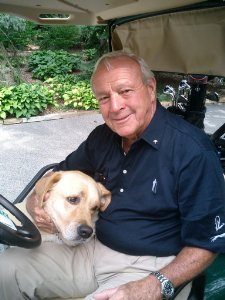
 Cranston chronicles his unlikely rise from a soap opera regular, trying to learn the ropes and the politics of show business on the fly. Discussing his failures as few men do, describing his work as few actors can, Cranston has much to say about innate talent, its benefits, challenges, and proper maintenance, but ultimately the book is about the necessity and transformative power of hard work.
Cranston chronicles his unlikely rise from a soap opera regular, trying to learn the ropes and the politics of show business on the fly. Discussing his failures as few men do, describing his work as few actors can, Cranston has much to say about innate talent, its benefits, challenges, and proper maintenance, but ultimately the book is about the necessity and transformative power of hard work.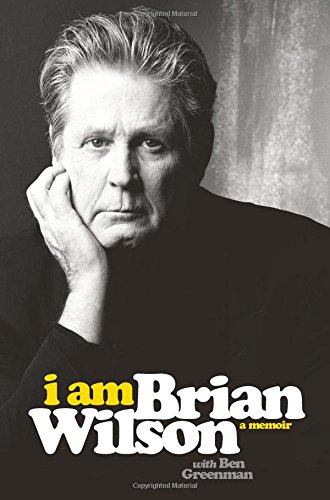 Whether he’s talking about his childhood, his band mates or his own inner demons, Wilson’s story, told in his own voice and in his own way, unforgettably illuminates the man behind the music, working through the turbulence and discord to achieve, at last, a new harmony.
Whether he’s talking about his childhood, his band mates or his own inner demons, Wilson’s story, told in his own voice and in his own way, unforgettably illuminates the man behind the music, working through the turbulence and discord to achieve, at last, a new harmony. Included are an eyewitness account of that first meeting between Lennon and McCartney, the inside story of how Ringo replaced Pete Best, an exploration of the brilliant but troubled soul of manager Brian Epstein, and the real scoop on their disastrous first visit to Germany and the death of Stu Sutcliffe.
Included are an eyewitness account of that first meeting between Lennon and McCartney, the inside story of how Ringo replaced Pete Best, an exploration of the brilliant but troubled soul of manager Brian Epstein, and the real scoop on their disastrous first visit to Germany and the death of Stu Sutcliffe. Janis reveals the full story of the daughter she loved. As the world watched the rise of a superstar, then the freefall of an addict to her untimely death, Janis simply saw her Amy, the girl she’d given birth to in 1983; the girl she’d raised and stood by despite her unruly behavior; the girl whose body she was forced to identify two days after her death-and the girl she’s grieved for every day since.
Janis reveals the full story of the daughter she loved. As the world watched the rise of a superstar, then the freefall of an addict to her untimely death, Janis simply saw her Amy, the girl she’d given birth to in 1983; the girl she’d raised and stood by despite her unruly behavior; the girl whose body she was forced to identify two days after her death-and the girl she’s grieved for every day since.